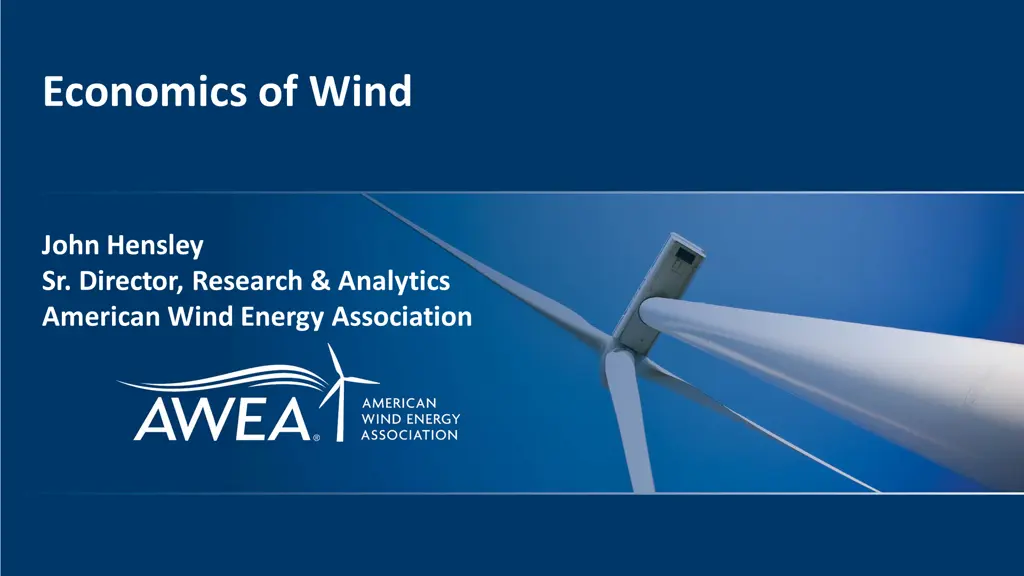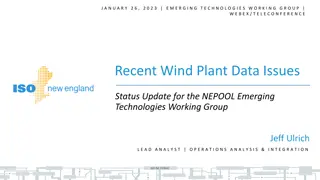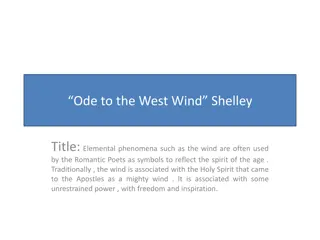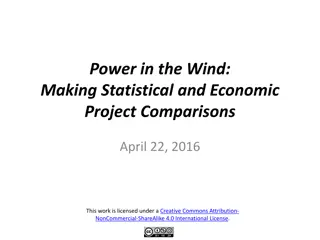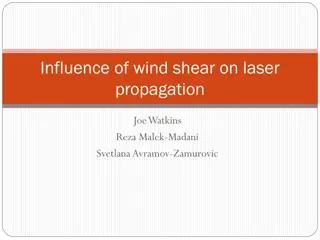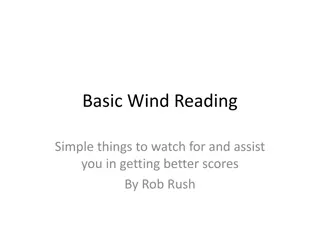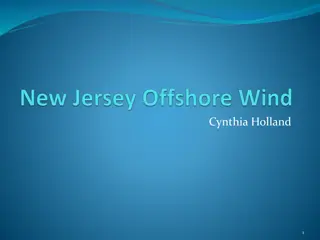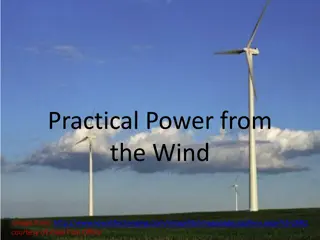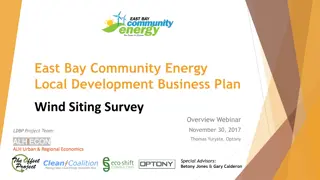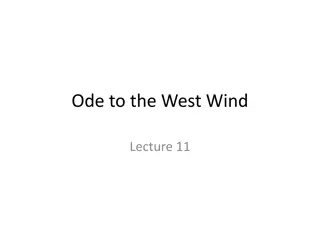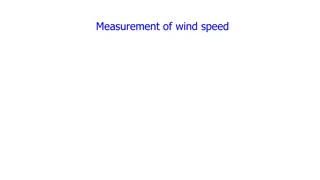Economics of Wind
Discover the economic impact and potential of wind energy in the United States, including job creation, investment opportunities, and the role of wind in powering millions of households. Explore the market drivers, cost reductions, and the role of transmission infrastructure. Learn how embracing wind energy can drive economic development and benefit local communities. Addressing policy obstacles is crucial for further unleashing the industry's potential.
- Wind energy
- economic growth
- job creation
- investment opportunities
- market drivers
- cost reductions
- transmission infrastructure
- economic development
- policy obstacles
Download Presentation

Please find below an Image/Link to download the presentation.
The content on the website is provided AS IS for your information and personal use only. It may not be sold, licensed, or shared on other websites without obtaining consent from the author. Download presentation by click this link. If you encounter any issues during the download, it is possible that the publisher has removed the file from their server.
E N D
Presentation Transcript
Economics of Wind John Hensley Sr. Director, Research & Analytics American Wind Energy Association
U.S. Annual and Cumulative Wind Capacity Growth Wind energy capable of powering 27 million American households with nearly 90,000 MW of wind power capacity operating at the end of 1Q 2018 Over 54,000 wind turbines across the U.S. U.S. wind power capacity has more than tripled since 2008 Wind is #1 renewable energy capacity source Over 7 GW added in each of last three years Source: AWEA U.S. Wind Industry First Quarter 2018 Market Report
Wind #1 source of new capacity in Midwest, Plains, & Texas Source: AWEA U.S. Wind Industry Annual Market Report Year Ending 2017
Strong manufacturing and project presence in Midwest Source: AWEA U.S. Wind Industry Annual Market Report Year Ending 2017
U.S. Wind Industry Employs 105,500 Americans Top 5 States 1. Texas (24,001 to 25,000) 2. Oklahoma (8,001 to 9,000) 3. Iowa (7,001 to 8,000) 4. Colorado (5,001 to 6,000) 5. Illinois (5,001 to 6,000) 2017 Wind Jobs by State Source: AWEA U.S. Wind Industry Annual Market Report Year Ending 2017
Wind delivers economic growth Cumulative Wind Project Investment $145 billion in private capital investment over past 10 years Landowner lease payments ~$267 million in 2017 Property, local, and state tax revenue $8.9 billion Investment in IL Source: AWEA U.S. Wind Industry Annual Market Report Year Ending 2017
Market Drivers: Cost Reductions Unsubsidized Wind LCOE Unsubsidized Wind LCOE by Region Source: Lazard s Levelized Cost of Energy Analysis 11.0
Market Drivers: Cost Reductions Unsubsidized Levelized Cost of Energy ($/MWh) Source: Lazard s Levelized Cost of Energy Analysis 11.0
U.S. wind industry expected to continue growing jobs Navigant Consultant estimates direct wind industry jobs will reach 147,000 in 2020 nearly a 50% increase from today s levels With a strong wind component manufacturing base and solid wind resource, the Midwest is expected to be a hub of growth Wind turbine technician is the second fastest growing job in the country. Jobs in construction, transportation and logistics, and manufacturing are also expected to grow Encouraging necessary skills and training important to ensure workforce is available
and fueling economic development In years 2017-2020, the U.S. wind industry is expected to drive $85 billion in economic activity Component manufacturing is expected to add $10 billion a year to the economy as the domestic supply chain works to fill turbine orders The industry will also continue to support state and local governments through sales, income, and property tax payments. Often these funds are critical to improving schools or rebuilding local infrastructure
Embracing the market: Corporate and Non-Utility Customers C&I Contracted Wind Power Projects Corporations are investing in wind energy not just because it is low cost and clean Looking to invest in local communities, create jobs, and develop partnerships with local governments Demand is not just concentrated among tech companies Wal-Mart, Anheuser Busch, GM, and others are also aggressively pursuing wind energy Source: AWEA U.S. Wind Industry Annual Market Report Year Ending 2017
Investment in Transmission Critical Completed and Proposed Transmission Lines Transmission critical to transport wind energy from remote areas to load centers Near-term transmission projects in development could support tens of thousands of additional wind MWs Critical to position the Midwest as a major renewable energy exporter. Source: AWEA U.S. Wind Industry Annual Market Report Year Ending 2017
Final Thoughts Workforce development key. Industry will require skills ranging from welders, mechanics, and maintenance technicians to electrical engineers, data scientists, and control room operators. Education programs, including technical and degree programs, required to ensure necessary skills are available Addressing policy obstacles can further unleash the development potential of the industry. Overbearing siting restrictions, difficult energy procurement regulations, slow interconnection review, among other policies, will limit wind development and its associated job and economic development impacts. Public Utility Commissioners and utility decision-makers should take a fresh perspective when evaluating the value of wind projects. Declining costs, improved technology, and enhanced capabilities can add value to utility portfolios helping to decrease costs to consumers, drive economic growth, and lower power emissions.
